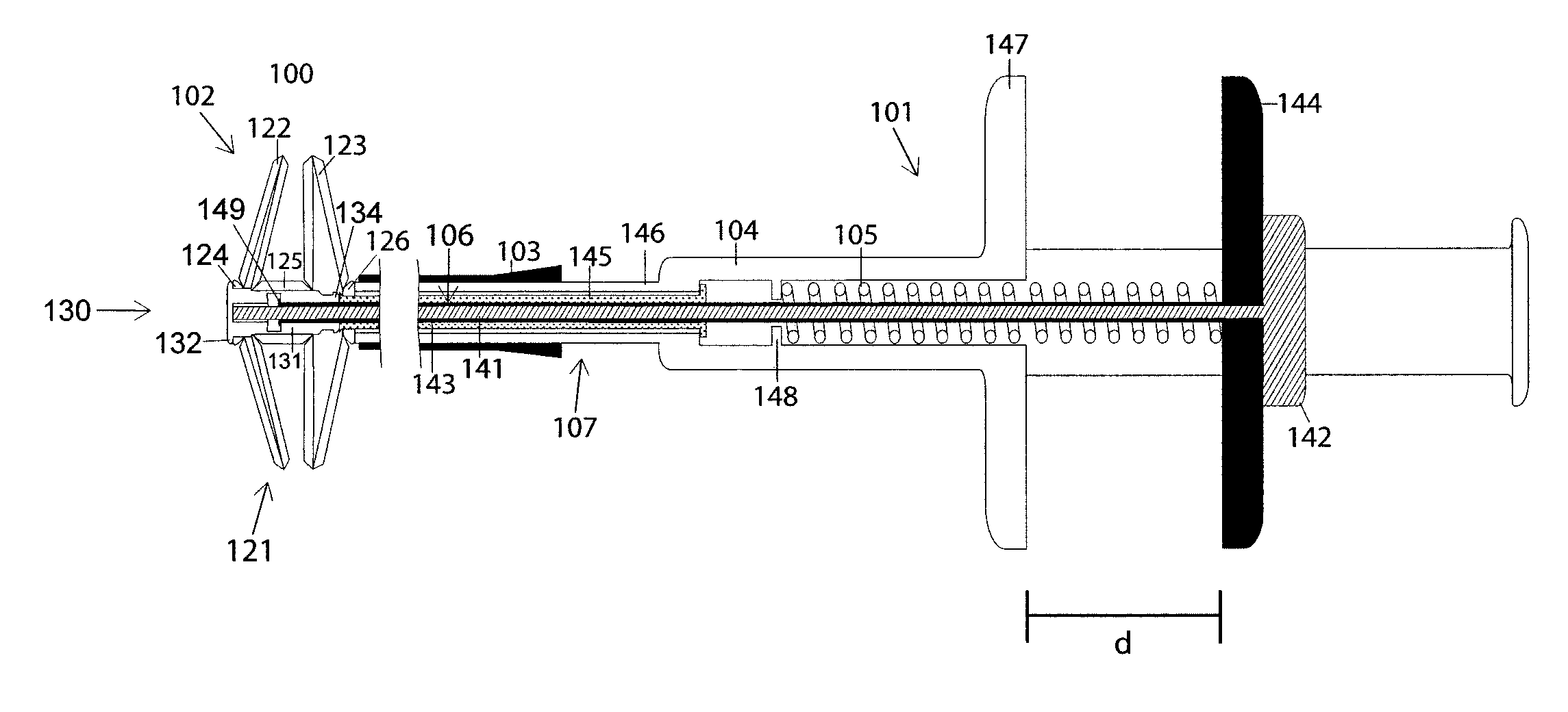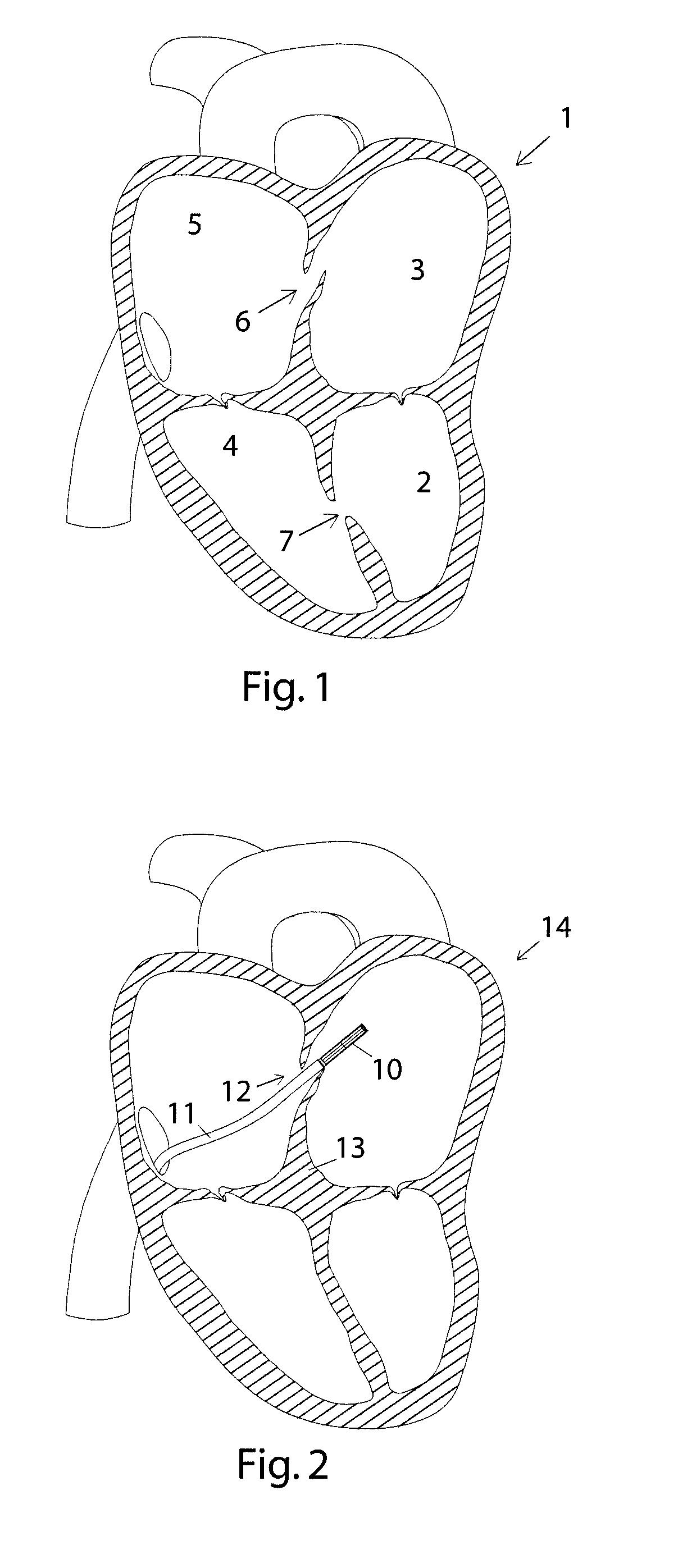Closure device and insertion assembly
a technology of a closure device and an insertion assembly, which is applied in the field of medical devices, can solve the problems and achieve the effect of reducing the risk of premature locking of the device in pla
- Summary
- Abstract
- Description
- Claims
- Application Information
AI Technical Summary
Benefits of technology
Problems solved by technology
Method used
Image
Examples
Embodiment Construction
[0027]A schematic cross-sectional view of a human heart 1 is shown in FIG. 1. The heart 1, with its left ventricle 2, left atrium 3, right ventricle 4, and right atrium 5, suffers from an atrial septal defect 6 as well as a ventricular septal defect 7. Below a medical procedure will be discussed in which an atrial septal defect is closed. It should, however, be clear that a septal defect closure device according to the present invention equally well could be employed to close a ventricular septal defect such as ventricular septal defect 7 of FIG. 1. It should further be noticed that the septal defects 6, 7 can be accessed from different vessels, e.g. from the superior or inferior vena cava, or from the aorta. This implies, in turn, that throughout the present description terms like “distal” and “proximal” should always be seen from the end of a delivering catheter, through which a septal defect closure device is delivered (and not from any particular chamber or vessel of a heart).
[0...
PUM
 Login to View More
Login to View More Abstract
Description
Claims
Application Information
 Login to View More
Login to View More - R&D
- Intellectual Property
- Life Sciences
- Materials
- Tech Scout
- Unparalleled Data Quality
- Higher Quality Content
- 60% Fewer Hallucinations
Browse by: Latest US Patents, China's latest patents, Technical Efficacy Thesaurus, Application Domain, Technology Topic, Popular Technical Reports.
© 2025 PatSnap. All rights reserved.Legal|Privacy policy|Modern Slavery Act Transparency Statement|Sitemap|About US| Contact US: help@patsnap.com



